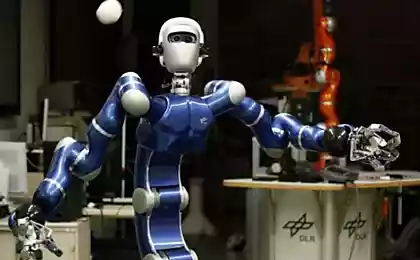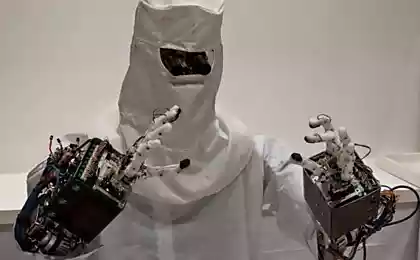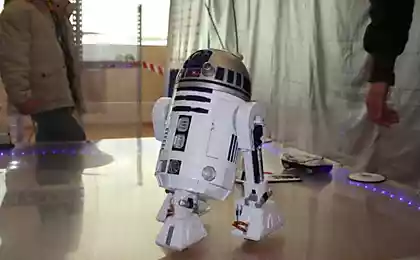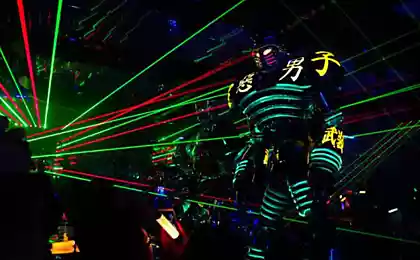165
How octopus robots could revolutionize surgery
Inspired by the eight tentacles of octopuses, researchers in Italy have created a robotic arm that allows surgeons to access limited areas of the body and carefully handle organs.
One arm of the robot will gently move the organs, and the other – to perform the operation with a miniature surgical set.
The development team from St. Anne’s School of Advanced Sciences in Pisa, Italy, believes that the device (see video below) could reduce the number of necessary tools used for incisions. One part of the robotic arm gently clamps and moves the organs, and the other does the operation with a miniature surgical set at the tip of the manipulator.
The human body presents a very complex and unstructured environment in which octopus abilities could offer several advantages over traditional surgical instruments, said Tommaso Ranzani, a professor at the Institute of Biorobotics in Pontedera. In general, the octopus does not have a fixed structure, it can adapt the shape of the body to the environment. The advantage of lacking elastic skeletal support is that eight flexible and long arms can twist, change in length, bend in any direction anywhere in the arm.
The prototype in its current form is a device 14 cm long and 3 cm wide, divided into two sections. Each contains cylindrical chambers into which air can be pumped, changing the inclination, length and curves of the hand. The other chamber is filled with coffee grounds. When air is pumped out of it, the granules contract and the hand becomes stiffer.
The researchers conducted numerous tests of the robotic device, demonstrating that it can bend 255 degrees and stretch 62 percent of its original length. The rigidity mechanism allows you to increase this figure from 60 to 200 percent.
Traditional surgical tasks to perform a single procedure require the use of many special tools such as clamps, expanders, artificial vision systems and dissections, says Ranzani. We believe that our devices are the first step towards creating a tool that can perform all these tasks and reach hard-to-reach areas in the body, safely supporting organs around the site of surgery.
Discovery News reports that such a robotic arm was invented 10 years ago as part of a Pentagon-funded project, when engineers created an artificial octopus with eight tentacles that could squeeze, hold and grasp objects with soft flexible hands. For many reasons, the project was never implemented.
P.S. And remember, just changing our consumption – together we change the world!
Source: www.robo-hunter.com/news/kak-roboti-osminogi-mogut-revolycionizirovat-hirurgiy
One arm of the robot will gently move the organs, and the other – to perform the operation with a miniature surgical set.
The development team from St. Anne’s School of Advanced Sciences in Pisa, Italy, believes that the device (see video below) could reduce the number of necessary tools used for incisions. One part of the robotic arm gently clamps and moves the organs, and the other does the operation with a miniature surgical set at the tip of the manipulator.
The human body presents a very complex and unstructured environment in which octopus abilities could offer several advantages over traditional surgical instruments, said Tommaso Ranzani, a professor at the Institute of Biorobotics in Pontedera. In general, the octopus does not have a fixed structure, it can adapt the shape of the body to the environment. The advantage of lacking elastic skeletal support is that eight flexible and long arms can twist, change in length, bend in any direction anywhere in the arm.
The prototype in its current form is a device 14 cm long and 3 cm wide, divided into two sections. Each contains cylindrical chambers into which air can be pumped, changing the inclination, length and curves of the hand. The other chamber is filled with coffee grounds. When air is pumped out of it, the granules contract and the hand becomes stiffer.
The researchers conducted numerous tests of the robotic device, demonstrating that it can bend 255 degrees and stretch 62 percent of its original length. The rigidity mechanism allows you to increase this figure from 60 to 200 percent.
Traditional surgical tasks to perform a single procedure require the use of many special tools such as clamps, expanders, artificial vision systems and dissections, says Ranzani. We believe that our devices are the first step towards creating a tool that can perform all these tasks and reach hard-to-reach areas in the body, safely supporting organs around the site of surgery.
Discovery News reports that such a robotic arm was invented 10 years ago as part of a Pentagon-funded project, when engineers created an artificial octopus with eight tentacles that could squeeze, hold and grasp objects with soft flexible hands. For many reasons, the project was never implemented.
P.S. And remember, just changing our consumption – together we change the world!
Source: www.robo-hunter.com/news/kak-roboti-osminogi-mogut-revolycionizirovat-hirurgiy
The paper is often more gems: the letters of Paul Florensky from prison children
Julienne with salmon and mushrooms
























